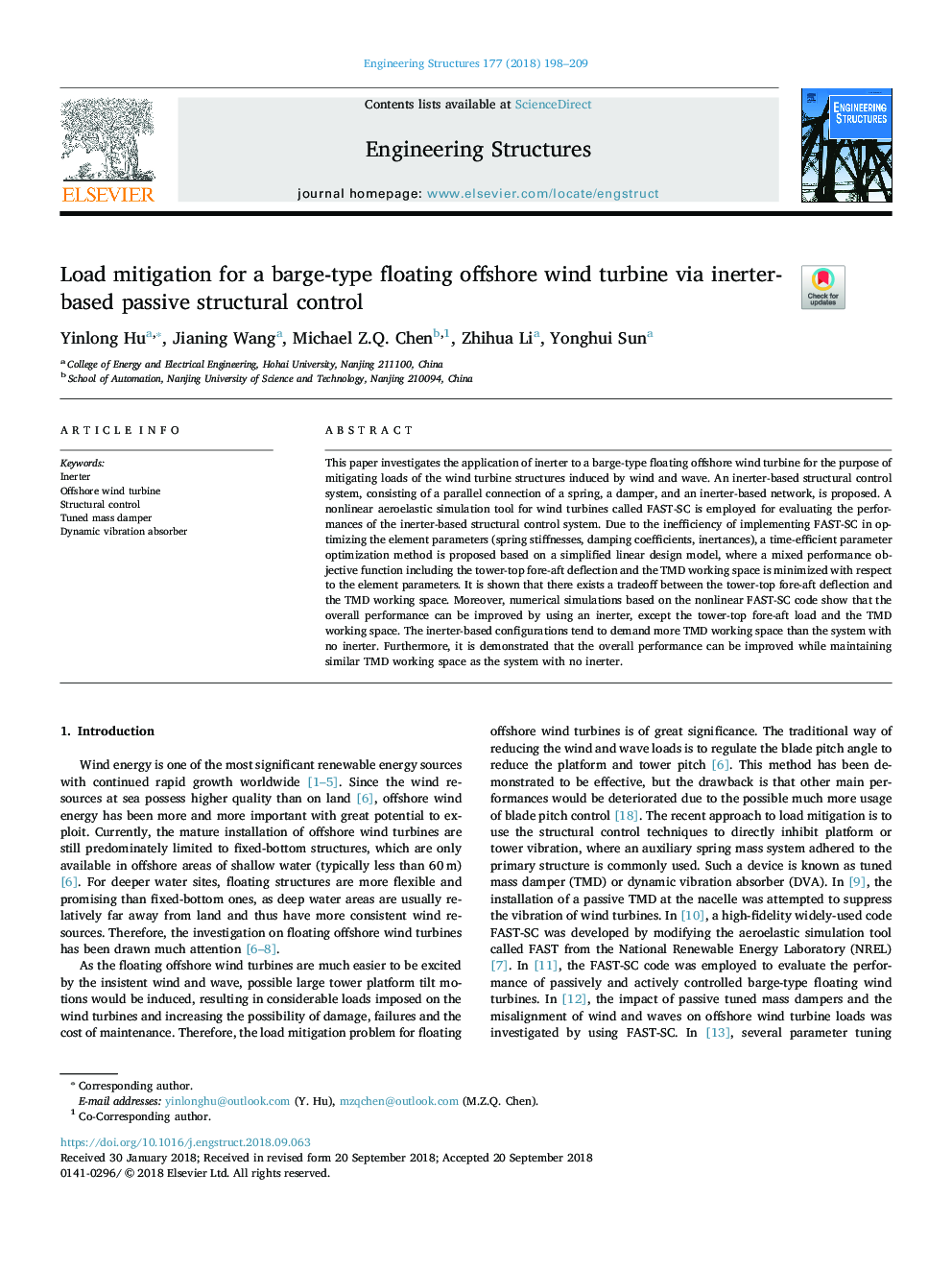| Article ID | Journal | Published Year | Pages | File Type |
|---|---|---|---|---|
| 11021321 | Engineering Structures | 2018 | 12 Pages |
Abstract
This paper investigates the application of inerter to a barge-type floating offshore wind turbine for the purpose of mitigating loads of the wind turbine structures induced by wind and wave. An inerter-based structural control system, consisting of a parallel connection of a spring, a damper, and an inerter-based network, is proposed. A nonlinear aeroelastic simulation tool for wind turbines called FAST-SC is employed for evaluating the performances of the inerter-based structural control system. Due to the inefficiency of implementing FAST-SC in optimizing the element parameters (spring stiffnesses, damping coefficients, inertances), a time-efficient parameter optimization method is proposed based on a simplified linear design model, where a mixed performance objective function including the tower-top fore-aft deflection and the TMD working space is minimized with respect to the element parameters. It is shown that there exists a tradeoff between the tower-top fore-aft deflection and the TMD working space. Moreover, numerical simulations based on the nonlinear FAST-SC code show that the overall performance can be improved by using an inerter, except the tower-top fore-aft load and the TMD working space. The inerter-based configurations tend to demand more TMD working space than the system with no inerter. Furthermore, it is demonstrated that the overall performance can be improved while maintaining similar TMD working space as the system with no inerter.
Related Topics
Physical Sciences and Engineering
Earth and Planetary Sciences
Geotechnical Engineering and Engineering Geology
Authors
Yinlong Hu, Jianing Wang, Michael Z.Q. Chen, Zhihua Li, Yonghui Sun,
